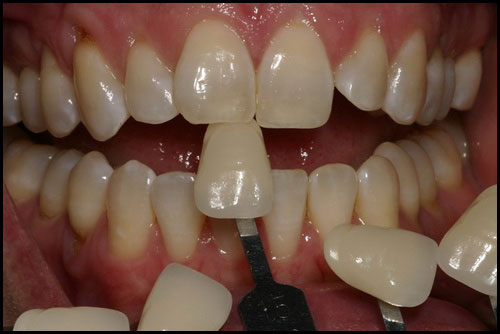EDIT:
To simplify the object of what I'm trying to say again:
I have a macbeth colour chart in front of me. How do I make my monitor display a photo I have just taken of this chart as close as possible to the chart I have infront of me.
Is there a way I can use my spyder to 'read' from the chart then 'read' from my LCD and calibrate it until every colour is accurate?
====
I understand the basics of monitor calibration - however - I am yet to try it. I'm not sure if calibration on it's own will be able to solve my problem but will be delighted if it could. I'd appreciate all your input!
I am a dentist, and use a ring flashed camera to take photos of mouths. When we need to make crowns, we have our own shade guides, that are standardised by crown manufacturers. The problem is, when we have taken the photos, they are not accurate to the physical shade guide we have. Colleagues have told me that even when they calibrate their monitors, the photo they have taken is not accurate to the shade guide they have in their hands. We need the photos to be accurate so that we can send photos to the dental lab who also would have a matched calibrated monitor, so they can make a crown's shade accurately to the photo we have.
Using calibration hardware or software, would it be possible to calibrate monitors so that what I see is what appears in the monitor?
Here's a photo of a shade guide we might use:

How might I approach this?
Thanks in advance
To simplify the object of what I'm trying to say again:
I have a macbeth colour chart in front of me. How do I make my monitor display a photo I have just taken of this chart as close as possible to the chart I have infront of me.
Is there a way I can use my spyder to 'read' from the chart then 'read' from my LCD and calibrate it until every colour is accurate?
====
I understand the basics of monitor calibration - however - I am yet to try it. I'm not sure if calibration on it's own will be able to solve my problem but will be delighted if it could. I'd appreciate all your input!
I am a dentist, and use a ring flashed camera to take photos of mouths. When we need to make crowns, we have our own shade guides, that are standardised by crown manufacturers. The problem is, when we have taken the photos, they are not accurate to the physical shade guide we have. Colleagues have told me that even when they calibrate their monitors, the photo they have taken is not accurate to the shade guide they have in their hands. We need the photos to be accurate so that we can send photos to the dental lab who also would have a matched calibrated monitor, so they can make a crown's shade accurately to the photo we have.
Using calibration hardware or software, would it be possible to calibrate monitors so that what I see is what appears in the monitor?
Here's a photo of a shade guide we might use:

How might I approach this?
Thanks in advance
Last edited:



 That is two different things imo. You will also have to take into consideration that no two monitors will be the same, the ambient lighting cast on the monitor either end will never be the same and what your eyes see and what the bloke at the lab see`s will never be the same in a month of Sunday`s, therefore you will never get an exact match
That is two different things imo. You will also have to take into consideration that no two monitors will be the same, the ambient lighting cast on the monitor either end will never be the same and what your eyes see and what the bloke at the lab see`s will never be the same in a month of Sunday`s, therefore you will never get an exact match !
!